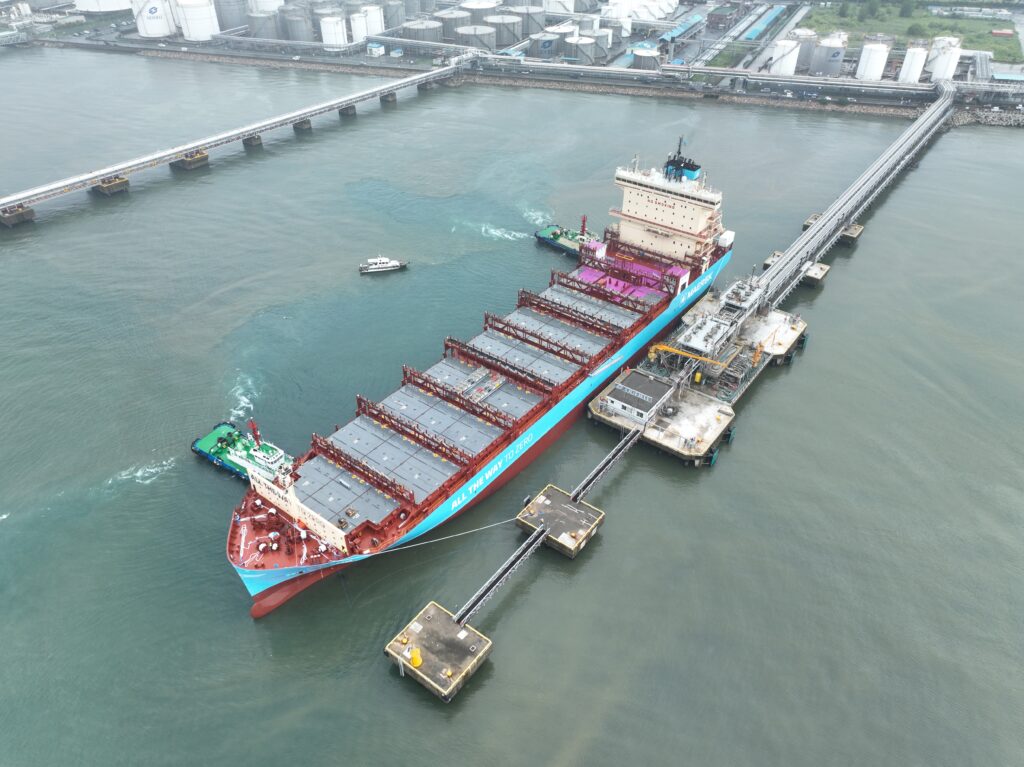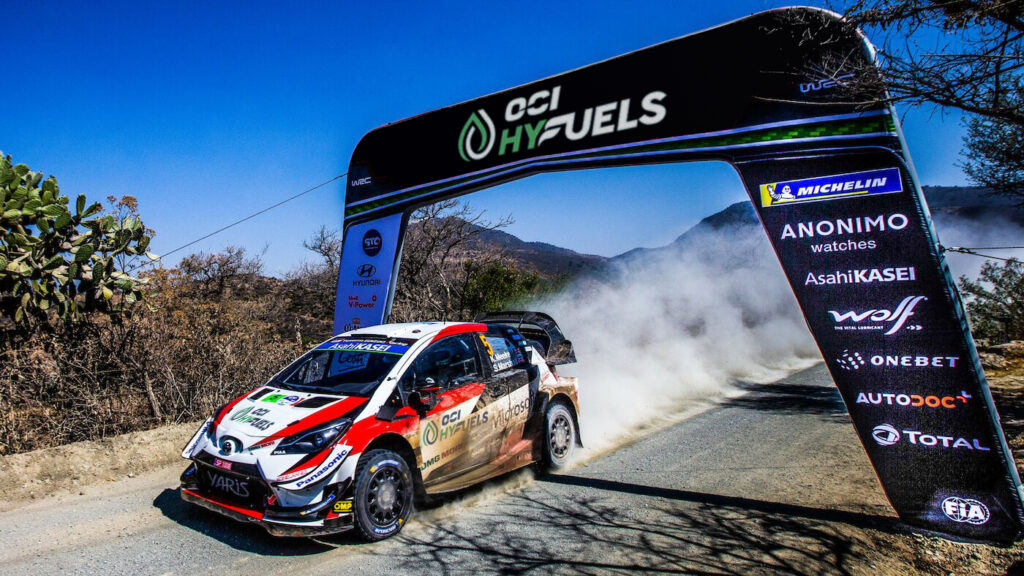Barend van Schalkwyk, Business Development Director – Marine at OCI HyFuels, spoke with Offshore Energy about OCI’s recent green methanol milestones and the power of collaboration for a smooth transition to cleaner shipping.
Read the full write up of Barend’s interview here.
Following the first green methanol bunkering operation with Maersk, what would you say are the key takeaways in terms of operational challenges and lessons learnt from this experience?
That collaboration is key – partners from the ports, regulatory authorities, ship owners, storage and supply partners and producers like OCI HyFuels all need to work together to make a change like this happen. Happily, this kind of collaboration has already resulted in a smooth process at the Port of Ulsan in Korea, and the Port of Singapore, and we look forward to same result thanks to the great partnerships in East Port Said in Egypt and the Port of Rotterdam in the Netherlands on the next legs of the journey. The journey’s progress so far has resulted in guidelines and processes that can also now be shared and replicated at other ports.
Having said that, while it has taken a lot of work from all sides, green methanol is a relatively easy transition – methanol is an established fuel and has been used in road fuels for decades. Methanol is actually safer than gasoline, it’s harder to ignite and burns at a slower rate with less heat intensity. The infrastructure to distribute methanol is already well established and the product is moved daily across the world in all modes of transport, including STS (ship to ship) and PTS (pipeline to ship). The existing infrastructure and ease of and experience in handling methanol have made it possible for the ports and partners involved to make the transition happen relatively quickly.
What implications does this operation hold for the wider shipping and energy sectors in terms of sustainability and decarbonization efforts?
As the first commercial voyage fueled by green methanol, this is a very important milestone for the decarbonization of shipping. The successful first bunkering in Ulsan, and second in Singapore, as well as the partnerships with authorities along the route from Asia, through the Suez Canal and into Europe show that green methanol is a safe and efficient shipping fuel, and that major global ports can adapt to methanol bunkering relatively easily. This has been a significant step for the industry, establishing the framework for future methanol bunkering at these major global ports.

It also comes at a time when there is increasing attention on decarbonizing the shipping industry. We welcome the increased ambition set out by the new IMO strategy. In particular, it is positive to see the indicative checkpoints in 2030 and 2040 and the specific targets to achieve an uptake of zero or near-zero GHG emission technologies, fuels and/or energy sources to represent at least 5% striving for 10% of the energy used by international shipping. However, there is still a significant amount of detail to come and this needs to come quickly to give the strategy overall – and especially the 2030 checkpoint – a chance of success.
How can OCI assist the shipping industry’s decarbonization drive and how does OCI’s green methanol production and supply align with the new decarbonization targets announced recently by the IMO?
As the leader in the green methanol space, we have developed the infrastructure across our facilities to source renewable feedstocks for the large-scale production and distribution of green methanol. The goal isn’t necessarily to build new capacity, but rather to decarbonize our existing asset base by injecting greener feedstocks. To that end, we have developed a multi-faceted strategy to transition our grey methanol production to green methanol in both the US and Europe, which allows us to transition alongside regulatory and demand evolution. Given our established production and distribution footprint and global infrastructure, we believe our transition pathway to green methanol will meet the demand as it materializes over the next few years and is flexible enough to adapt to any regulatory hurdles that arise. This also positions us very well to meet the coming green ammonia demand, as we are also a leading ammonia producer and distributor with production capabilities in the US, the Netherlands, and the Middle East and North Africa, and we have the required infrastructure in place for both ammonia and methanol globally.
In addition to the maritime industry, which other sector(s) do you see as the most promising market for the uptake of green methanol?

The transport sector is another key industry we are already seeing uptake of green methanol in. We already supply roughly 3% of the UK’s vehicle market, and we have been a fuel partner of the WRC for over 10 years. When used as a fuel, green methanol provides between 60% and 90% reduction in greenhouse gas emissions versus traditional fossil-based fuels, depending on the application and other life cycle factors. But crucially, without sacrificing performance. In the example of road vehicles, this is proven by the record times achieved by cars running on our fuel. The use of our fuel by WRC has already proved the efficacy and safety of green methanol as a vehicle fuel, and the important role it has to play in decarbonization efforts.
Particularly for heavy-duty vehicles which are harder to electrify, low carbon and renewable liquid fuels are an important solution to decarbonize the industry. The transport sector’s uptake of green fuels is largely thanks to regulation. We’re seeing mandates from the EU translate into a material uptick of renewable fuels consumption in road vehicles, and green methanol (or its derivatives) are a great pathway to achieve these targets. In the EU, we’re selling green methanol products into countries including France and Germany so we hope to see a virtuous circle where both supply and demand continues to grow, establishing stable, thriving low emissions fuels market.
We also see an opportunity in the chemicals sector where methanol has traditionally been used as a building block for construction materials and consumer goods. Today, a third of grey methanol consumption is used to produce plastic, so there are readily available applications for green methanol to decarbonize products we use in everyday life. If and when regulations come into play for the manufacturing sector, the growth potential for green methanol will be even greater. However, there are currently no mandates towards this and so the change would come from individual businesses own drive to decarbonize.
What are OCI’s future plans for expanding the use of green methanol in the shipping industry, and what potential benefits does this offer in terms of business growth?

The X-Press Feeders announcement is OCI HyFuels’ second green methanol agreement in the marine sector in just under a month, reflecting the speed of growth of the sector and OCI HyFuels’ ability to support the growing demand for green methanol from the marine sector, starting in Rotterdam with plans to expand to several other ports around the world. Looking ahead, we plan to continue to leverage our unique position as the world’s biggest green methanol producer, in combination with our partnerships, expertise and infrastructure, to capitalize on the exciting opportunity presented by renewable and low carbon renewable fuels and support the decarbonization of the industry.
Find out more about OCI HyFuels here.
Image credits: Maritime and Port Authority of Singapore, Port of Ulsan Authority, X-Press Feeders
